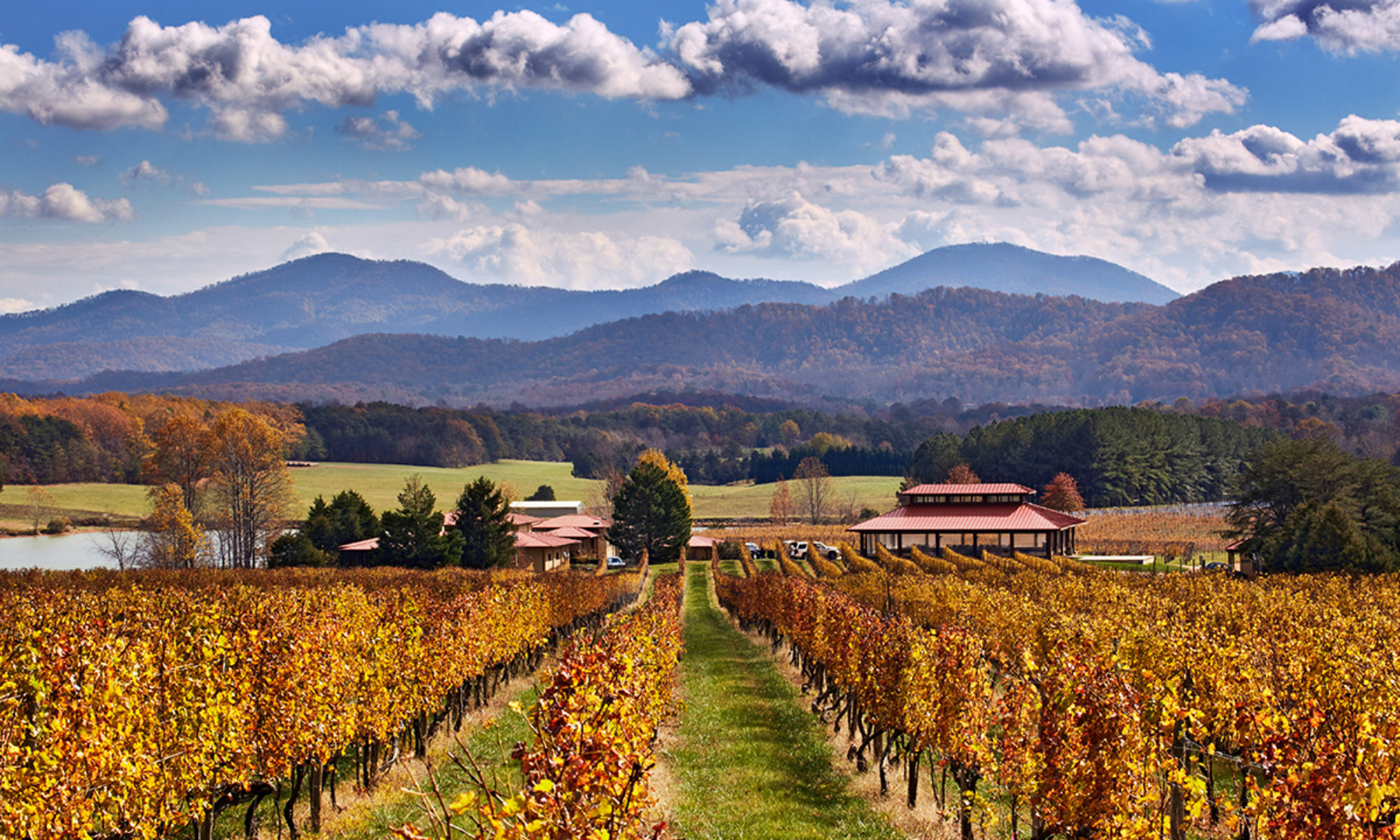Mediterranean Cellars
In Warrenton, south-central Fauquier County, a little north of the town on Route 17. Louis Papadopolous opened Mediterranean Cellars in 2003, having made wine in his native Greece earlier in his career (along with goldsmithing).
Wine. Tier II. Wide range of reds and whites, and a pair of sweet wines. A Retsina wine, Greek style, is available. Wines are produced principally from estate-grown grapes. Tasting menu includes several wines aged longer than is common at Virginia winery tastings, up to eight years old. Good olive oil as well.
Setting. One star. Winery is set on a hill offering good views overlooking the vineyard and the hills. Pretty drive coming in. The tasting room has a log cabin feel. Light Greek food available.
Stories. (1) Where the early 19th century elite played. The Ruins of the old Fauquier White Sulphur Springs resort are located southeast of the center of Warrentown, on Great Run. Before the Civil War, White Sulphur Springs was the most celebrated mineral water resort in the United States. A one-day stage coach ride from Washington DC, which in turn was accessible by the new railroads, made it feasible for plantation owners through the South to spend a month at “The Springs.” The grand Pavilion Hotel had a dining room which could seat 400. Guests, who included Presidents Monroe, Madison and Van Buren, were entertained by orchestras, balls, horse racing, fox hunting, medieval style jousting tournaments. The famous Dred Scott decision was written at the Springs by Chief Justice Taney in the Summer of 1856.
(2) 17th Century tribal wars. The same Springs which encouraged the creation of the White Sulphur Springs resort in the 1800s naturally had attracted other people centuries earlier. When Captain John Smith first explored the lands of Virginia, he noted on his 1608 map the presence of a Native American town here, which he called Tanxnitania. This was a major town of the Manahoac tribe, thought to be Siouan language speakers. Some five decades later, the Manahoacs abandoned the site of the Springs here and moved to the James River, driven away by constant raids by northern Iroquois Indians. Those Indian raids appear to have been a new phenomenon which followed the arrival of European settlers. Well before the European presence grew large enough to inflict military damage on Native American tribes, their arrival had major and devastating impacts. Disease was clearly the biggest factor, which many Indian towns becoming completely depopulated due to repeated epidemics of different types – the Native Americans not having the built-up immunity to many germs which had limited impact on the Europeans who brought them with them. The arrival of firearms was another overnight game-changer, with the tribes who obtained them first from Europeans gaining an immediate and unprecedented military advantage over enemy tribes. And the third of the big changes was the enormous escalation in slavery of Native Americans. The escalation was driven partly by southern planters in Virginia and the Carolinas, seeking Indian slaves for labor in their rapidly developing tobacco plantations, and partly by tribes looking to repopulate their own ranks, after the large-scale deaths from diseases. The Iroquois, who were by far the most powerful of the tribes in the new colonies, were feared more than any other. From their bases in upstate New York, they ranged far South and West in their “mourning raids”, capturing thousands to join their ranks, and typically killing twice as many as they captured. The Manahoacs’ move from Warrentown, or then Tanxnitania, was one of a great many displacements of tribes that took place during this period. As the European settlers moved west, they were moving into Native American territories already undergoing major changes.
